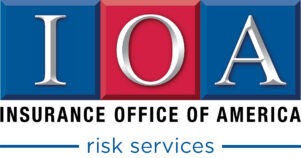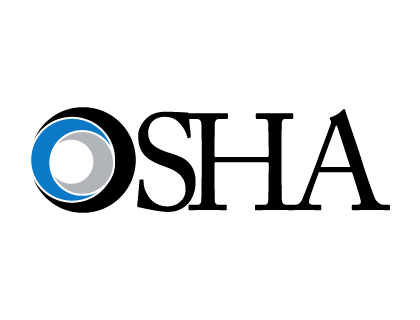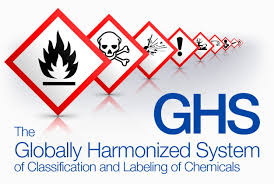
Skid Steer Loader Safety
Spring is here…swimming pool installers and landscaping companies are getting busy as home owners want to beautify their property. One piece of equipment regularly used for these projects is a skid steer loader…a “jack-of-all-trades”. With the many attachment options, these units can be found doing many tasks. From earthmoving to landscaping, skid steers help operators get the job done!
Skid steer loaders are manufactured with safety features to prevent unexpected or inadvertent movement of the loader arm and hydraulics when the operator is not in the cab. Operators should read the owner’s manual and demonstrate that they understand the safe work practices when operating the skid steer loader. Operators should be provided with at least an annual refresher safety training, and always document training just in case OSHA pays you a visit.
Common safety features of a skid steer loader include the seatbelt to prevent the operator from being thrown about inside or falling out of the skid steer loader. Other features include Falling Object Protective Structure (FOPS), Roll-Over Protective Structure (ROPS), and a Control Interlock System. The FOPS and ROPS protect the operator from falling objects and injury due to accidental rollovers. Control Interlock Systems and/or operator seats used on some machines typically activate a safety interlock system that is intended to prevent inadvertent movement of the machine's controls when the operator is not seated.
When safe work practices are not followed, mishaps are bound to occur. The most common types of incidents from skid steer usage include:
-
Running over bystanders, including children or the operator
-
Entrapment or crushing, which can happen when the operator or helper is caught between an attachment and the frame of the skid steer
-
Entrapment of the operator when a load rolls or drops onto him or her while he or she is in the operator station
-
Rollover when the skid steer is operated on a steep slope or uneven terrain
-
Tipping due to a heavy load or attachment in the front
-
Falls while improperly mounting or dismounting the skid steer
-
Injection injuries caused when pressurized hydraulic fluid is injected into a person’s body
-
Crushing/pinching injuries to hands and fingers due to improper hooking/unhooking of an attachment
While OSHA does not have a standard requiring employers to use control interlock systems or seatbelts on skid steer loaders, it is important for employers to understand that under the General Duty Clause of the OSH Act (section 5(a)(1)), employers must provide their employees with a workplace free from recognized hazards that would likely cause death or serious physical harm.
For example, performing maintenance or repair operations while a skid steer loader is energized creates the recognized hazard of crushed-by and/or caught in-between. OSHA may cite an employer for a violation under the General Duty Clause if the employer does not take feasible, effective measures to abate such hazard.
The following practices will minimize hazardous situations associated with operating and maintaining skid steer loaders:
-
Read and understand the operator's manual before using the piece of equipment.
-
Follow the manufacturer's operation and maintenance recommendations and specifications.
-
Lower the bucket or attachment so that it is flat on the ground.
-
Do not leave the operator's seat while the engine is on.
-
Never attempt to activate the controls unless properly seated with the seatbelt fastened and the seat bar (if equipped) lowered. Keep all body parts inside the cab while operating a skid steer loader.
-
Never modify, bypass, disable, or override safety systems, and never operate equipment in which safety systems have been modified or are not working properly.
-
Equipment with modified or malfunctioning safety systems should be taken out of service until repaired or replaced.
-
Do not permit riders on the skid steer loader, in the bucket or attachment, or in the operator's compartment unless the compartment is designed to accommodate a second rider.
-
Keep bystanders at a safe distance from the work area.
-
Establish a routine maintenance and inspection program in accordance with the manufacturer's recommendations.
-
Inspect the skid steer loader to ensure that all safety systems are functioning properly prior to operating the equipment.
-
Do not attempt maintenance or other work while lift arms or attachments are raised without using an approved lift arm support device. Replace protective guards and shields after repairs or service.
-
Operators must be trained on the proper inspection, use, maintenance, and repair of skid steer loaders according to the manufacturer's instructions.
-
Supervisory personnel must be trained to identify hazards, such as safety systems that have been bypassed, disabled, or that require maintenance.
Safety Links offers an interactive course to provide participants with a general understanding of the safe and efficient operation of a skid steer. After the course, participants will be able to identify specific health and safety hazards associated with operating a skid steer.
For more information on this and many other courses, contact Fran Soto at 800-768-7036 or fsoto@transportins.net.
Article written with the assistance of: mysafetynews.com; osha.gov; extension.org



 Many times, the cause of the incident is not completely obvious. During an incident investigation it is imperative that all employees assist the investigator as he or she conducts the investigation. This can be difficult and/or embarrassing for some so it is important to remind and reassure them that the ultimate goal of the investigation is to create a safer workplace for everyone. The goal of the investigation is not to assign blame, but rather keep the incident from occurring again.
Many times, the cause of the incident is not completely obvious. During an incident investigation it is imperative that all employees assist the investigator as he or she conducts the investigation. This can be difficult and/or embarrassing for some so it is important to remind and reassure them that the ultimate goal of the investigation is to create a safer workplace for everyone. The goal of the investigation is not to assign blame, but rather keep the incident from occurring again.
 Why all the fuss? The GHS is basically an international attempt to get everyone on the same page. The United Nations realized that many countries already have/had regulatory systems in place for classification, labeling, etc.; however the differences are significant enough to require multiple classifications, labels, and safety data sheets for the same product. Multiple classifications can lead to inconsistent protection for users as well as extensive regulatory burdens on chemical companies. The hope is that every country will incorporate the GHS elements into their own chemical management systems with the goal of making the international sale and transportation of hazardous chemicals easier, as well as making workplace conditions safer for all employees exposed to chemical hazards.
Why all the fuss? The GHS is basically an international attempt to get everyone on the same page. The United Nations realized that many countries already have/had regulatory systems in place for classification, labeling, etc.; however the differences are significant enough to require multiple classifications, labels, and safety data sheets for the same product. Multiple classifications can lead to inconsistent protection for users as well as extensive regulatory burdens on chemical companies. The hope is that every country will incorporate the GHS elements into their own chemical management systems with the goal of making the international sale and transportation of hazardous chemicals easier, as well as making workplace conditions safer for all employees exposed to chemical hazards.